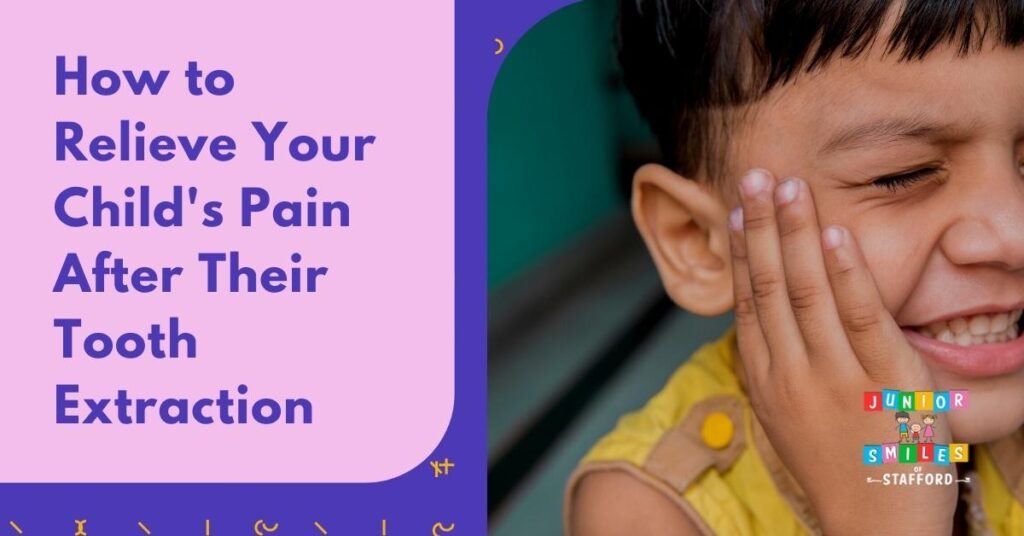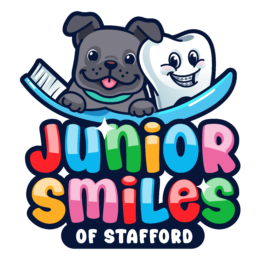Child Tooth Extraction Recovery: A Helpful Guide for Parents

As parents, the health and well-being of our children is our top priority, and this extends to their dental health as well. When it comes to child tooth extraction, whether it’s for deciduous teeth, commonly known as baby teeth, or a permanent tooth extraction, it can be a source of anxiety for both the child and the parent.
This guide aims to alleviate those worries by providing comprehensive insights into the recovery process from child tooth extraction. From understanding the recovery timeline of tooth removal to navigating the healing process, this article offers essential information and practical tips to ensure your child’s comfort and proper healing.
Understanding Children’s Tooth Extraction
Often, a child tooth extraction is necessary due to reasons like tooth decay, overcrowding, or for the proper emergence of permanent teeth. In some cases, pediatric tooth extraction is required for a 5 year old or younger, especially when baby teeth obstruct the growth of permanent ones. Unlike routine tooth extractions in adults, handling a child’s tooth extraction involves not only the technical dental procedure but also addressing the emotional comfort of the child. Knowing when and why such procedures are necessary, and what they entail, can significantly reduce anxiety for both the child and the parents. Pediatric dentists specialize in these procedures, ensuring minimal discomfort and prioritizing the child’s wellbeing throughout the process.
Child Tooth Extraction Recovery Timeline
The recovery timeline following a child tooth extraction is a critical aspect for parents to understand for ensuring a smooth healing process. Typically, the initial recovery period, where the focus is on managing discomfort and allowing the tooth socket to heal, spans a few days post-surgery. In the first 24 hours, the use of a cold pack or ice pack can help reduce swelling, and changing the gauze pack as directed by the dentist is crucial to control any excess bleeding. After the first day, transitioning to moist heat can aid in reducing any residual swelling.
Within the first few days after surgery, it’s common for children to experience some discomfort, which can be managed with child pain medicine or prescription pain medication, as advised by the dentist. The healing process for the gums and tooth socket typically progresses well over the next week, and parents should observe a return to normal activities and diet gradually. However, it’s important to note that the complete healing and natural healing process of the gums and bone can take a few weeks. Parents should follow up with a post-operative appointment to ensure proper healing and address any questions about wound healing.
Aftercare Tips for Baby Tooth Extraction
When your little one has undergone a baby tooth extraction, knowing the right aftercare steps is essential for a quick and complication-free recovery. Here are some valuable tips to follow:
Pain Management
After the extraction, your child might experience some discomfort or pain. Administer child pain medicine as prescribed or recommended by the dentist. Prescription strength pain medication may be provided for more severe cases. Remember, a child’s response to pain may vary, so closely monitor their comfort levels.
Dietary Adjustments
Immediately following the extraction, stick to soft foods and liquid foods to avoid any irritation to the extraction site. Avoid crunchy foods, spicy foods, and extremely hot or cold foods that might aggravate the area. Gradually reintroduce normal foods as the healing progresses.
Oral Hygiene
Keeping the mouth clean is vital. Encourage gentle rinsing with warm salt water especially after meals to aid in healing and prevent infection. However, avoid vigorous rinsing or spitting in the first 24 hours to protect the healing clot.
Rest and Activity
Limit physical activity for a few days after the extraction to prevent any excessive bleeding or dislodging of the blood clot. Encourage your child to relax and avoid strenuous play.
Follow-Up Care
Schedule a post-surgical appointment with your dentist to ensure proper healing and to address any concerns. If you notice symptoms like unbearable pain, excessive bleeding, or signs of infection, contact your dentist immediately.
Soft Foods for Tooth Pain After Extraction
A child’s teeth need time to recover, therefore it’s important to keep their diet soft while they do so. Some examples of soft meals that you can make for your child are:
Soups and Broths
Warm soups and broths are comforting and easy on the extraction site. They provide a good mix of nutrients and hydration, essential during recovery. Opt for blended or creamy soups with soft ingredients to avoid any need for chewing.
Smoothies and Milkshakes
These are perfect for getting your daily dose of fruits and dairy without aggravating the extraction site. Packed with nutrients, they can be a tasty treat during recovery. Remember to avoid using straws, as the suction can interfere with the healing process.
Scrambled Eggs
Soft, easy to chew, and rich in protein, scrambled eggs are an excellent choice post-extraction. They can be lightly seasoned and are versatile enough to be eaten at any meal. Scrambled eggs also provide essential nutrients that aid in healing.
Mashed Potatoes
A classic comfort food, mashed potatoes are soft and easy to eat. They can be flavored with gravy, butter, or even cheese for added taste and calories. This versatile dish is soothing and can be a significant source of energy.
Rice or Risotto
Soft-cooked rice dishes like risotto are creamy and soothing. They can be prepared in a variety of ways to keep meals interesting and nutritious. These dishes are also easy to consume and digest.
Potential Issues and When to Contact a Dentist
Even with meticulous care, certain issues may arise after a child tooth extraction. Being aware of these potential complications and knowing when to seek professional advice is crucial for a parent. Here are some key concerns to monitor and scenarios where contacting a dentist is necessary:
Excessive Bleeding
While some bleeding is normal, excessive bleeding that persists beyond the first few hours post-extraction requires attention. If a gauze pack doesn’t control the bleeding, or if it seems unusually heavy, it’s important to contact your dentist.
Persistent Pain
Some discomfort is expected after tooth extraction, but if your child experiences unbearable pain that isn’t relieved by prescription pain medication or regular pain relief methods, it may indicate an underlying issue.
Signs of Infection
Symptoms such as increased swelling, fever, pus discharge, or a foul taste can indicate an infection. Infections require prompt treatment, so contacting your dentist immediately is vital.
Reaction to Medication
If your child shows any signs of an allergic reaction to prescription pain medicine or any other counter pain medications, such as rashes, difficulty breathing, or unusual swelling, seek immediate medical attention.
Loose or Dislodged Blood Clot
The formation of a protective blood clot in the tooth socket is crucial for healing. If this clot is dislodged or dissolves, it can lead to a painful condition known as dry socket. Consult your dentist if you suspect this has occurred.
Child Tooth Extraction FAQs
How painful is tooth extraction for kids?
Tooth extraction for kids can vary in discomfort, but with modern dental techniques, it’s usually not overly painful. Dentists often use local anesthesia to numb the area, significantly reducing pain during the procedure. After the extraction, some discomfort and soreness are normal, but this is typically manageable with prescribed or over-the-counter child pain medicine. The child’s individual pain tolerance and the complexity of the extraction (such as routine tooth extractions vs. removal of wisdom teeth) also play a role in how much pain they experience. The dentist will provide specific guidance on managing any post-procedure discomfort to ensure the child remains as comfortable as possible.
How long should a child rest after tooth extraction?
The duration of rest required after a child’s tooth extraction varies, but generally, a period of 24 to 48 hours of reduced activity is recommended. During this time, it’s important to avoid vigorous physical activity that could increase blood flow and lead to excess bleeding. Most children can return to normal, non-strenuous activities within a day or two, but complete healing of the tooth socket and gums may take several weeks. Parents should monitor their child’s recovery and follow the dentist’s specific instructions regarding rest and activity levels post-extraction.
Can my child eat after tooth extraction?
Yes, your child can eat after tooth extraction, but it’s crucial to stick to specific types of food for a while. In the first few hours post-extraction, it’s advisable to avoid eating until the numbness wears off to prevent accidental biting of the cheek or tongue. Once they start eating, opt for soft, non-irritating foods like yogurt, applesauce, and mashed potatoes. Avoid hard, crunchy, or sticky foods that might disturb the extraction site. Gradually, as the healing progresses, more solid foods can be reintroduced into the diet, but this should be done cautiously and ideally under the dentist’s guidance.
What can I give my child for pain after tooth extraction?
For pain management after tooth extraction, you can give your child over-the-counter pain relievers such as acetaminophen or ibuprofen, following the dosage guidelines for their age and weight. It’s important to avoid aspirin as it can increase bleeding risk. In cases of more significant discomfort, the dentist may prescribe prescription pain medicine. Alongside medication, using a cold pack on the cheek can help reduce swelling and discomfort. Always follow the dentist’s instructions regarding pain management, and if the pain seems unusually severe or persists, consult the dentist for further advice.
Book an Appointment with Junior Smiles Today
Navigating your child’s recovery after a tooth extraction can be a smooth and stress-free experience with the right knowledge and care. Remember, each child’s recovery journey is unique, and patience, along with attentive care, is key to ensuring a swift and comfortable healing process. If you have any concerns or need expert dental care for your child, don’t hesitate to reach out to Junior Smiles of Stafford. As Stafford, VA’s trusted children’s dentist, our team is dedicated to providing gentle, compassionate, and top-quality dental care for your little ones. We understand the nuances of pediatric dental health and are here to guide you every step of the way, from routine check-ups to post-extraction care.

